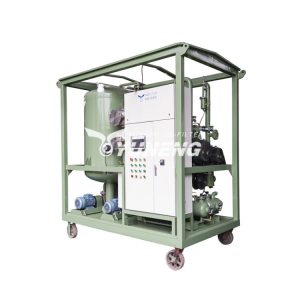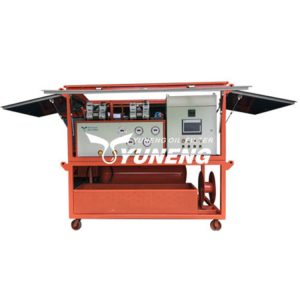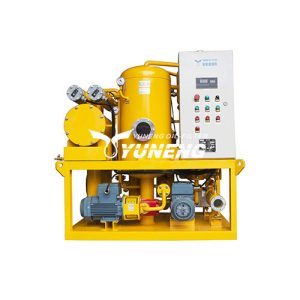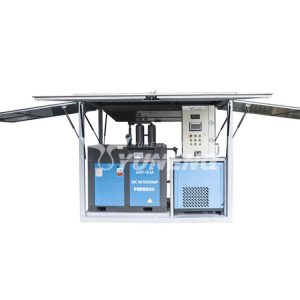
The Necessity of Transformer Oil Dehydration
- 2021-10-22
In this article, we will describe the source of moisture in transformer oil and the hazards of this excess water. After reading this article, you will know the importance of transformer oil dehydration.
Since water in transformer oil will exist in various forms, dehydration by one method alone is not desirable. The dirty transformer oil must be dehydrated and degassed by a professional transformer oil filtration machine to restore the original performance of the transformer oil.
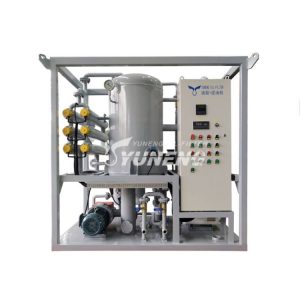
In the process of using transformer oil, in addition to mixing with water and grease, these can pass the oil moisture tester and oil content tester to determine whether the content reaches the standard. However, with the passage of time, various impurities will be mixed into the transformer oil to affect its normal performance. Frequent replacement of transformer oil means a large increase in cost. A transformer oil filtration machine has become the most desirable option.
1. Where does the water for transformer oil come from?
Water in transformer oil is mainly produced in two ways. One is from the atmosphere, the moisture produced by contact with the air when the transformer continuously consumes transformer oil during operation. The second is water or grease from insulating materials such as cellulose. Most of the water brought in this way is caused by the aging of the transformer. Generally speaking, the transformer continues to operate under full load, and its insulation system will probably aging within 20-30 years. After aging, the insulator will release 0.5-0.75% of the insulation weight as water.
The above two methods will cause the transformer oil to generate unnecessary moisture, affect its normal working efficiency, and even lead to a shortened operating life of the transformer. The water in transformer oil exists in the following forms:
① Free water (water can settle on the bottom of the oil tank): This water does not affect the dielectric strength of the oil. But it is still superfluous because it means that there must be dissolved water in the oil;
② Dissolved water: Dissolved water will significantly affect the dielectric strength of the oil (this water usually comes from the atmosphere);
③ Combined water: The appearance of combined water is one of the first signs of oil aging. The combined water can increase the temperature with the heat generated during the operation of the transformer, and the combined water becomes steam;
④ Emulsified water: This water is a mixture of transformer oil and microscopic water droplets. It cannot be separated from the oil by heating, sedimentation and filtration.
The transformer oil dehydration is necessary to make the concentration of water in the transformer oil reach the level standard that allows the use of this transformer oil, and restore the performance of the oil to the required performance parameters.
2. What is the danger of water in transformer oil?
Almost 75% of transformer failures are caused by oil pollution and deterioration. It is necessary to use clean transformer oil, but frequent replacement of transformer oil will not only increase the economic pressure of the enterprise, but also cause environmental pollution due to improper disposal of the used oil. Therefore, regular maintenance of transformer oil is the best choice for enterprises. So what are the hazards of water in transformer oil?
① Speed up the oxidation speed of transformer oil, reduce the insulating strength of transformer oil and the service life of the transformer;
② Corrosion of transformer metal parts caused by water in oil;
③ Affect the stability of the transformer partial discharge;
④ The fluidity of the oil decreases when the equipment is running;
⑤ Arcing.
Transformer oil as an insulating fluid, its main function is to be used as a dielectric material and an effective coolant. In order to perform these functions, the insulating fluid should have the necessary quality when it is used for the first time. In order to ensure its stable performance, it is necessary to pay attention to the maintenance of insulating fluid during use to maintain its initial quality.
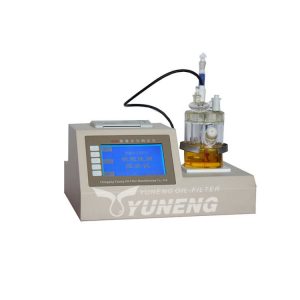
3. How to remove water in transformer oil?
Generally speaking. The methods commonly used for transformer oil dehydration are centrifugation and filtration. The emulsified water in the oil is treated by centrifugal force. The traditional transformer oil filtration method requires frequent replacement of the filter medium. Too much contact between the transformer oil and the air will accelerate the oxidation rate of the oil.
Therefore, a more effective method of dehydrating transformer oil is high temperature and vacuum. A vacuum dehydrator oil purification system can effectively remove free water and combined water in oil. Our company owns the patented transformer oil filtration technology and jointly develops oil filtration technology with a famous local university (Chongqing University). The transformer oil dehydration machine of Yuneng does not need to replace the filter medium, which reduces the contact time between transformer oil and air, and can prolong the service life of the transformer.
The vacuum transformer oil purification equipment with oil filtration patent has a high working vacuum degree, mainly used for vacuum oil injection and circulating hot oil drying, and has a better transformer oil quality protection function.
If you have any requirements and questions about transformer oil filtration, please feel free to contact us.

